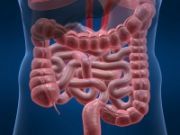Article
Gut Microbiota Linked to Diabetes and Obesity
Author(s):
Intestinal bacteria levels may be a good marker for determining risk of type 2 diabetes and obesity.

Patients who are obese and/or have type 2 diabetes have lower levels of several of the most common types of gut bacteria compared to healthy patients, a discovery that could prove new insight into risk monitoring and treatment targets for these patients.
Study results presented at ICE/ENDO 2014, the joint meeting of the International Society of Endocrinology and The Endocrine Society, revealed that patients with Type 2 diabetes or obesity have changes in the composition of their intestinal micro-organisms that are not seen in healthy people.
According to a news release from The Endocrine Society, other recent reports have also found an association between specific bacterial species in the human digestive system and obesity and diabetes.
Lead investigator Yalcin Basaran, MD, an endocrinologist from Gulhane Military Medical Academy School of Medicine, Ankara, Turkey, said, “The gut microbiota may be used as an important marker to determine the risk of these metabolic diseases -- obesity and diabetes -- or it may become a therapeutic target to treat them.”
For the study, researchers obtained stool samples from 27 severely obese adults with BMI of 35 or higher, 26 adults with newly diagnosed Type 2 diabetes, and 28 healthy controls. All participants were antibiotic-free for at least the previous three months and were not taking any other medications.
According to the news release, “Fecal analysis using a molecular biology technique showed that several of the most common types of bacteria in the gut were present at considerably lower levels in the obese and diabetic groups, compared with healthy controls. These reductions ranged from 4.2 to 12.5 percent in the obese patients and 10 to 11.5 percent in the diabetic patients.”
The researchers reported that “bacterial counts related to certain metabolic variables.” For example, BMI and HbA1c “influenced levels of the most common gut bacterial species, Firmicutes.” Waist circumference and HbA1c affected levels of the bacteria Bifidobacteria. Both weight and fasting blood glucose level influenced levels of Clostridium leptum.
“Further studies should be carried out to elucidate if the gut microbial changes are a cause or effect of metabolic diseases,” Basaran said. “Manipulation of intestinal bacteria could offer a new approach to manage obesity and Type 2 diabetes.”




